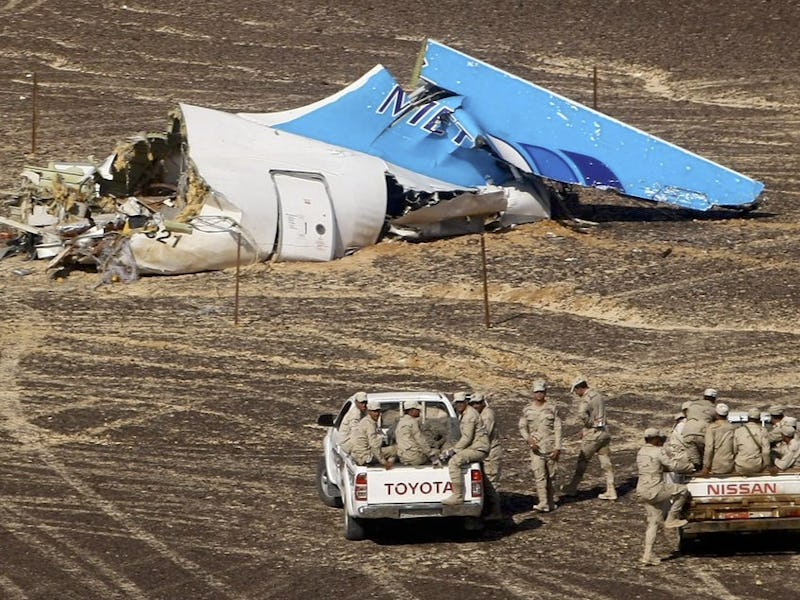The Cause of the Catastrophic Russian Plane Crash Remains a Mystery
Reports conflict as to whether the pilot of the A321 jet told air traffic controllers of technical problems after takeoff.

Murky details aren’t helping investigators uncover the cause of the October 31 plane crash in Egypt’s Sinai Peninsula, where a Russian plane reportedly disintegrated in mid-air and fell 31,000 feet, killing all 224 passengers.
Officials speaking on behalf of Russian airliner Metrojet are steadfast in their claims that the Airbus A321-200 crash was not due to mechanical failures or technical problems. On the contrary, officials are insisting that the plane, which was en route to St. Petersburg, was hit by an outside force that caused its rapid descent into the Egyptian desert.
“We exclude technical problems and reject human error,” Alexander Smirnov, the deputy general director of Metrojet, told reporters at a news conference today in Moscow. Smirnov insisted the pilot made no distress signal or complaint before the plane lost radio contact with air traffic controllers just 23 minutes after takeoff. Reports have said 17 children, ranging in age from 2 to 17, were among those on the plane.
Officials at Sharm el-Sheikh International Airport are telling a story that paints Smirnov statements as a public relations stunt. RIA Novosti, a state-owned Russian news agency, reports that the pilot of the A321 Airbus warned air-traffic controllers of technical issues shortly after taking off, and asked for a route change, according to a source at the airport.
Still, Smirnov deflected any indication that the structural integrity of the plane might have been uncertain: “This isn’t flying, it’s falling. Apparently, the plane sustained damage before this [and] that became the reason for the fall.”
Video of the wreckage shows the remnants of the plane scattered throughout a huge expanse of desert.
In a darker turn that buffets Smirnov’s claims, an Egyptian satellite wing of ISIS is claiming responsibility for the downed plane. Middle Eastern security experts say that’s unlikely.
Zack Gold, a Sinai security expert and fellow at the Institute for National Security Studies in Tel Aviv, told the Financial Times: “Assuming accuracy of flight data, the only way IS [Isis]-Sinai could have hit the plane with a missile is if the flight was already crashing or if the group has more advanced weapons than the Islamic State itself.” In response to the possibility of terrorism disrupting commercial air traffic in the Sinai region, several commercial airlines, including Lufthansa and Air France have suspended flying over the region.
Speculation of a possible terrorist attack, including whether or not the plane was brought down by a suicide bomber, isn’t helping draw attention away from the specific A321-200 Airbus itself, which was 18 years old and had recently undergone significant structural repairs. A 2001 incident saw the plane’s tail strike the runway at an airport in Cairo.
Tail strike incidents like the one from Cairo in 2001 are not uncommon, and the entire A320 family of Airbuses has a reputation for low accident ratings. A 2014 study by Boeing examining a 56-year period of commercial jet airplane accidents, found that the A320 family had one of the smallest fatality rates of any class of plane. As of August 2013, there were 8,000 A320 Airbuses in commercial use.
According to Airbus, the particular A321 operated by Metrojet “had accumulated some 56,000 flight hours in nearly 21,000 flights” since it was first activated for commercial use in 1997.
An ongoing investigation is being conducted by the French Investigation Agency, BEA.